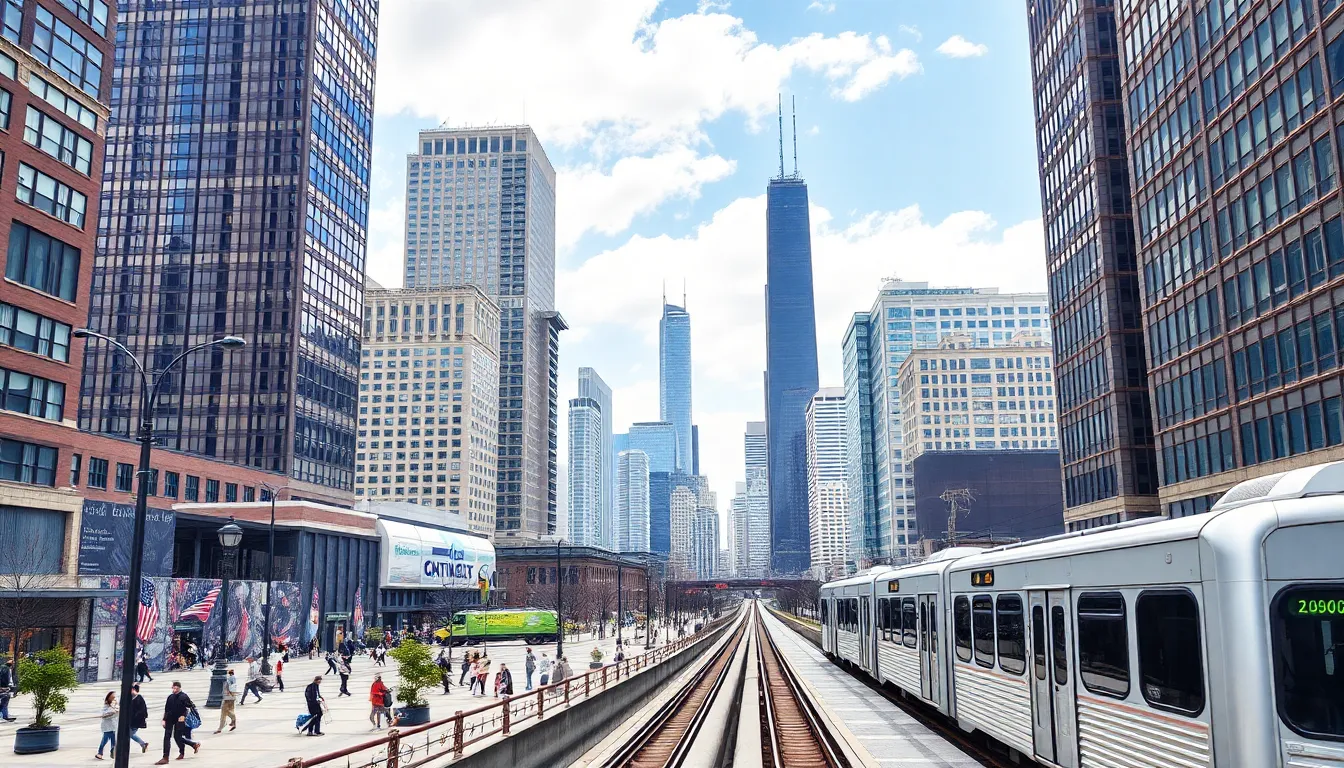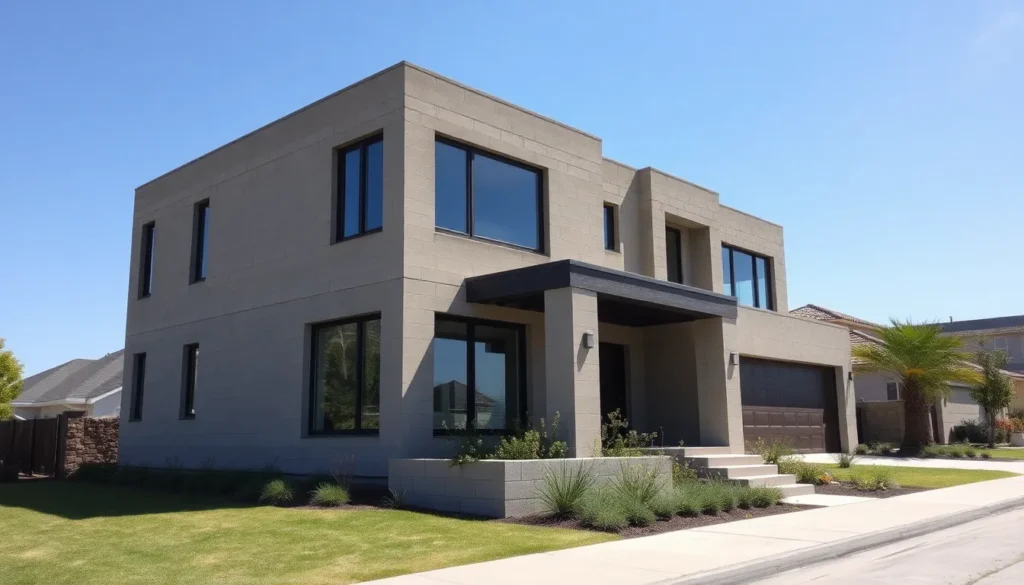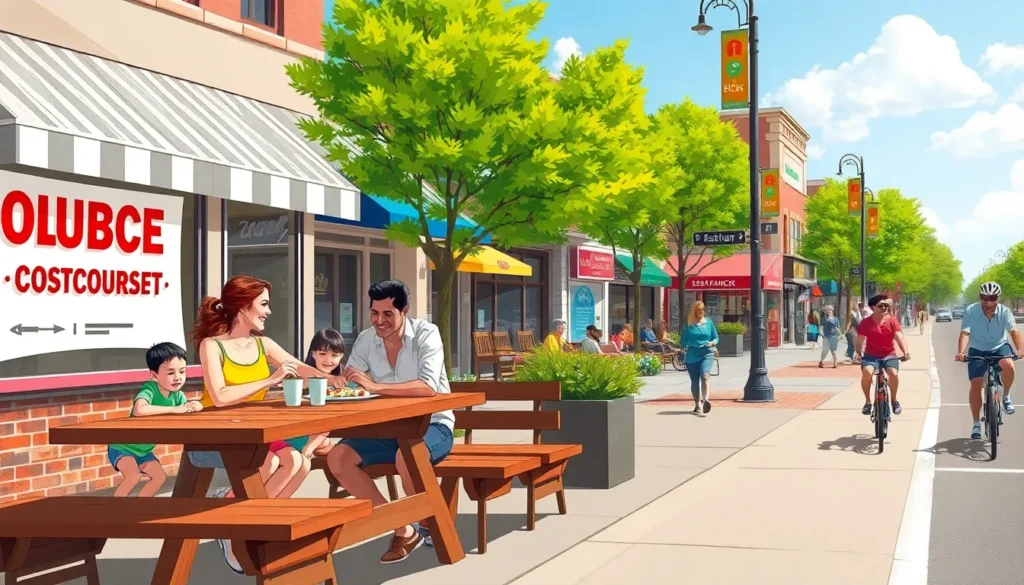Living in Illinois can feel like a rollercoaster ride—thrilling yet a bit dizzying when it comes to the cost of living. From the bustling streets of Chicago to the serene landscapes of the countryside, Illinois offers a diverse lifestyle, but at what price? Whether you’re a city slicker craving deep-dish pizza or a quiet soul enjoying the great outdoors, understanding the financial landscape is crucial.
With housing costs that can make you raise an eyebrow and grocery bills that might lead to some creative budgeting, it’s essential to know what you’re getting into. Dive into the nitty-gritty of expenses, and discover how to thrive in the Land of Lincoln without breaking the bank. After all, who wouldn’t want to enjoy life’s pleasures while keeping their wallet happy?
Table of Contents
ToggleOverview of Cost of Living in Illinois
Cost of living in Illinois varies significantly between urban and rural areas. Housing costs contribute heavily, with Chicago often demonstrating higher rents compared to smaller towns. A two-bedroom apartment in Chicago averages $2,400 monthly, while the same apartment may cost $1,200 in rural regions. Groceries also present a disparity, reflecting regional preferences and availability.
For example, urban areas can see grocery prices 10% higher than those found in less populated areas. Residents typically experience greater expenses related to transportation in metropolitan zones, with public transit and parking costs consistently rising.
Utility costs in Illinois also differ, influenced by seasonal demand. Winter months may require higher heating costs, while summer sees increased cooling expenses. In addition, Illinois property taxes rank among the highest in the nation, affecting overall living expenses significantly.
Healthcare presents another compelling factor. Individuals living in Chicago tend to pay around $400 monthly on average for health insurance, compared to $350 in rural communities. This indicates that healthcare access and affordability varies by location.
Education costs vary too. Public schools in larger cities often incur higher funding requirements, impacting local property taxes. Private school tuition may reach upwards of $15,000 annually, particularly in urban settings.
Understanding these nuances aids residents and newcomers in planning their budgets effectively while navigating the state’s diverse financial landscape. Familiarity with these costs can lead to better decision-making regarding lifestyle choices, housing, and essential services.
Major Cities and Their Cost Comparisons

Illinois features varying costs of living across its major cities, influencing residents’ financial decisions. Understanding these differences helps in budgeting effectively.
Chicago
Chicago stands as the most expensive city in Illinois. The average rent for a two-bedroom apartment reaches $2,400, significantly impacting monthly budgets. Grocery prices in the city can run 10% higher compared to rural areas. Transportation costs also add up, with public transit fares and parking expenses contributing to overall living costs. Property taxes remain some of the highest in the nation, influencing housing affordability. Healthcare expenses average around $400 monthly for insurance, making it vital to factor in these costs when considering life in Chicago.
Springfield
Springfield offers a more affordable alternative to Chicago. The average monthly rent in Springfield for a two-bedroom apartment hovers around $1,200. Grocery prices in this city show a smaller increase, usually just 5% more than rural areas. Public transportation is less expensive, allowing for easier commuting without hefty fees. Property taxes, although present, are less burdensome than those in Chicago. Healthcare costs average about $350 monthly, making it a budget-friendly option for families and individuals alike.
Rockford
Rockford presents an even more cost-effective choice within Illinois. Rent for a two-bedroom apartment averages approximately $1,100, easing financial strain. Grocery prices align closely with rural settings, usually not exceeding city rates by much. Transportation expenses remain manageable, allowing residents to maintain mobility without significant costs. Property taxes in Rockford are relatively lower, contributing to more disposable income. Healthcare costs are also reasonable, averaging around $350 monthly, ensuring that residents face fewer financial hurdles.
Factors Influencing the Cost of Living
Understanding the factors that influence the cost of living in Illinois helps individuals make informed financial decisions. Significant components include housing, transportation, utilities, and taxes, each with unique implications.
Housing Market Trends
Housing costs vary widely across the state. Chicago’s average rent for a two-bedroom apartment reaches $2,400. In contrast, rural areas see averages closer to $1,200. Home prices reflect this disparity, with urban properties commanding much higher valuations. Renting appears less burdensome in Springfield and Rockford, where average rents hover around $1,200 and $1,100, respectively. Residents in suburban regions find more affordable options but may compromise on proximity to city amenities. These trends highlight the importance of selecting the right location inline with budget considerations.
Transportation Costs
Transportation expenses also play a crucial role in overall living costs. Urban areas like Chicago face higher public transit fares and parking fees. Monthly public transit passes in Chicago can cost approximately $100, while smaller cities may charge significantly less. Rural residents often rely on personal vehicles, impacting gas and maintenance costs. Commuting distances in urban settings add strain on budgets, with longer travel times and higher fuel expenses. Budgeting for transportation must account for these regional differences to ensure effective financial planning.
Utilities and Taxes
Utility costs fluctuate throughout the year, influenced by seasonal changes. Residents in urban environments pay more due to higher demand and infrastructure expenses. Water, electricity, and heating can run higher, particularly in Chicago, with average monthly utility bills reaching $200. Property taxes further affect budgets, as Illinois has among the highest rates nationwide. Urban property taxes result from increased funding requirements for public services. Residents in Springfield and Rockford experience lower rates, contributing to their overall affordability. Understanding these dynamics assists individuals in managing monthly expenses effectively.
Comparison to National Averages
The cost of living in Illinois varies significantly from national averages. Housing expenses in Illinois stand out, with an average rent of $2,400 for a two-bedroom apartment in Chicago, while the national average hovers around $1,800. Rural areas offer an average rent of $1,200, demonstrating a clear divergence from urban pricing.
Grocery prices reflect this trend, as residents in urban settings pay about 10% more than the national average of $350 for monthly groceries. In contrast, Springfield and Rockford provide more affordable grocery options, with prices only 5% higher than rural areas, further illustrating a regional discrepancy.
Transportation costs also exceed national averages, especially in metropolitan areas. Public transit fares and parking fees in Chicago add to the overall expense, where average monthly transit costs near $130, compared to $70 in less populated regions.
Utility expenses change with the seasons, but urban dwellers often experience higher bills. Monthly utility costs in Chicago can surpass the national average, contributing to budgeting complexities.
Property taxes in Illinois rank among the highest nationwide, influencing living costs substantially. For homeowners, these taxes can average around 2.3% of home value, compared to the national average of about 1.1%. This substantial difference highlights the financial impact of living in Illinois.
Healthcare expenses also vary, with Chicago residents typically paying around $400 monthly for insurance, in contrast to rural residents at about $350. The affordability of care impacts overall financial health, shaping lifestyle decisions.
Education funding presents another layer of complexity. Urban public schools rely on higher property taxes, affecting both living costs and education quality, while private school tuition in cities can reach up to $15,000 annually, far exceeding the national average.
Understanding these variations allows individuals to plan more effectively, ensuring a balanced budget while enjoying the offerings of Illinois.
Navigating the cost of living in Illinois requires careful consideration of various factors. Urban areas like Chicago present higher expenses in housing and transportation compared to more affordable cities like Springfield and Rockford. Understanding these differences empowers residents to make informed financial decisions.
By recognizing the unique challenges of living in different regions of the state, individuals can better manage their budgets. Whether choosing urban conveniences or rural tranquility, striking a balance between lifestyle and financial obligations is essential. Ultimately, Illinois offers diverse living experiences that cater to a range of preferences and budgets, making it important for residents to stay informed and adaptable.













